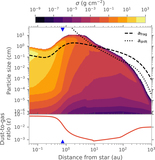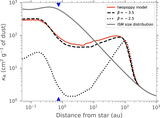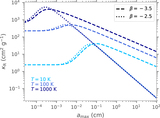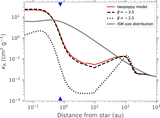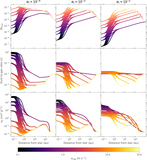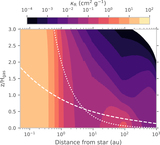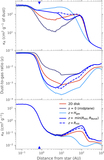Image Details
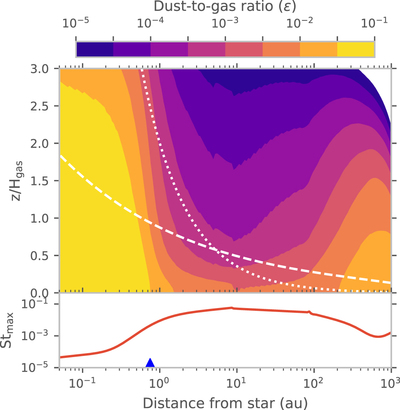
Caption: Figure 7.
The top panel shows the dust-to-gas ratio ϵ as a function of height above the midplane z and distance from the star after 1 Myr of evolution. The white dashed and dotted lines mark the height of the Hill radius RHill and Bondi radius RBondi of a 15 M⊕ planet, respectively. The bottom panel shows the midplane Stokes number of the largest grains present in the disk at t = 1 Myr. The water-ice line is marked with a blue triangle. Well-coupled grains within the ice line lead to efficient vertical mixing of grains and hence a weak dependence of ϵ on z. Beyond the ice line, large grains that dominate the dust mass settle close to the midplane, which leads to a strong decline in ϵ as a function of z.
Copyright and Terms & Conditions
© 2021. The American Astronomical Society. All rights reserved.


